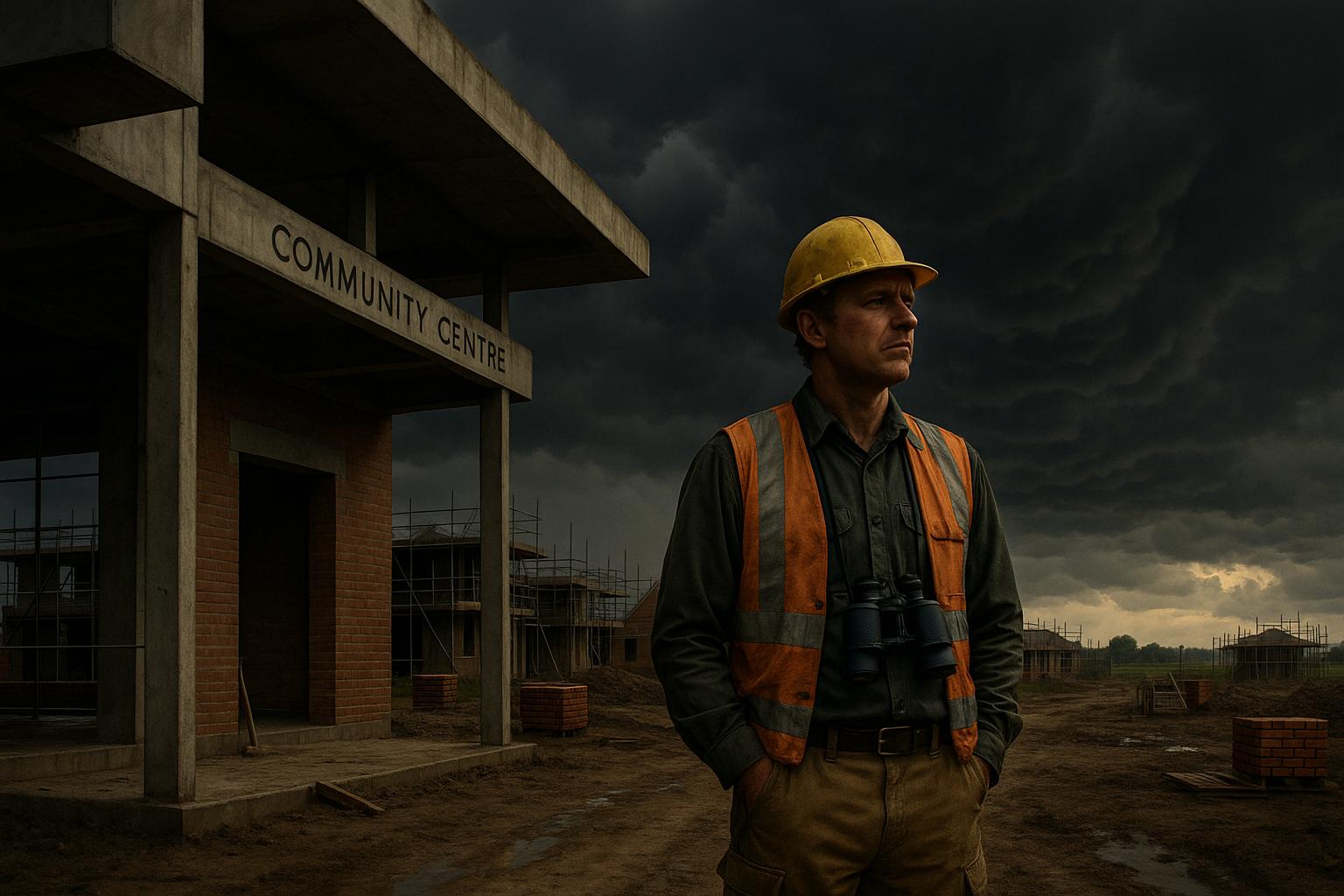The UK community and amenity construction sector has shown a mixed performance through 2025, marked by significant fluctuations in project activity and contract awards. Recent data reveal a 27 per cent year-on-year decline in project starts, accompanied by a striking 139 per cent increase in main contract awards compared to the previous year. Despite this surge in contract awards, detailed planning approvals have contracted sharply, falling 62 per cent from 2024 levels. No major projects valued over £100 million secured approval during this period, highlighting a cautious market atmosphere.
The sector's performance varies notably across project types. Local facilities dominate, contributing 41 per cent of all project starts and showing a robust 44 per cent growth to a total value of £272 million. Blue light projects, encompassing emergency services infrastructure, surged 68 per cent to £112 million, exhibiting strength amid wider sector challenges. Conversely, prison construction witnessed a steep downturn, with a 63 per cent drop in project starts year-on-year to £206 million.
Regional trends demonstrate disparity in the community and amenity sector's health. London has emerged as a stronghold, seeing project starts grow more than sevenfold to £198 million, buoyed significantly by a £126.8 million investment in the Contingency Response Programme – Package 6. The East Midlands also recorded impressive growth, with project starts increasing more than 25 times to £65 million. However, Scotland faced a considerable setback, with a 33 per cent decline in project starts totaling £156 million and a 29 per cent drop in detailed planning approvals, though the region still holds a 48 per cent share of approvals overall.
Historical context from earlier in the year shows a generally uneven pattern. In March 2025, project starts decreased by 25 per cent while contract awards rose modestly by 26 per cent, and detailed planning approvals fell steeply by 65 per cent year-on-year. The East Midlands and London consistently exhibited growth during these months, while Scotland's activity waned. The East Midlands region performed particularly well in April 2025, with a remarkable 1,082 per cent increase in community and amenity project starts and a 43 per cent rise in detailed planning approvals, reflecting buoyant infrastructure and education sector investments.
By contrast, the East of England saw a 12 per cent decline in overall project starts in May 2025, although it experienced significant growth in private housing and health sector projects. Detailed planning approvals there more than doubled, rising 243 per cent, driven by utilities and infrastructure sectors. June 2025 brought a rebound in the community and amenity sector with a 14 per cent increase in project starts and a 52 per cent rise in contract awards, even as detailed planning approvals declined by 47 per cent.
The sector faced challenges earlier in 2025 as well, including a 44 per cent fall in contract awards reported in February, alongside a 66 per cent drop in detailed planning approvals. Regional performance remained varied, with Yorkshire & the Humber bucking some of the negative trends by posting a 74 per cent increase in community and amenity project starts at that time.
Despite pockets of growth, broader UK construction activity has encountered significant headwinds. A July 2025 survey from S&P Global indicated the sharpest contraction in over five years in overall construction output, with the purchasing managers' index plunging to 44.3 from 48.8 the previous month. The residential building and civil engineering sectors were particularly affected, raising concerns about the government's ambition to deliver 1.5 million new homes by mid-2029. Contractors cited delays, reduced tender opportunities, and lack of client commitment as key factors driving the slowdown.
In summary, while certain regions and subsectors within UK community and amenity construction exhibit strong growth and increased contract awards, the overall market is tempered by fewer project starts and a steep decline in detailed planning approvals. The absence of major projects over £100 million underlines a cautious outlook amidst broader industry headwinds and economic uncertainties.
📌 Reference Map:
- Paragraph 1 – [1] Construction News, [5] Construction News
- Paragraph 2 – [1] Construction News
- Paragraph 3 – [1] Construction News
- Paragraph 4 – [2] Construction News, [3] Construction News, [4] Construction News
- Paragraph 5 – [5] Construction News
- Paragraph 6 – [6] Construction News
- Paragraph 7 – [7] Reuters
Source: Noah Wire Services
